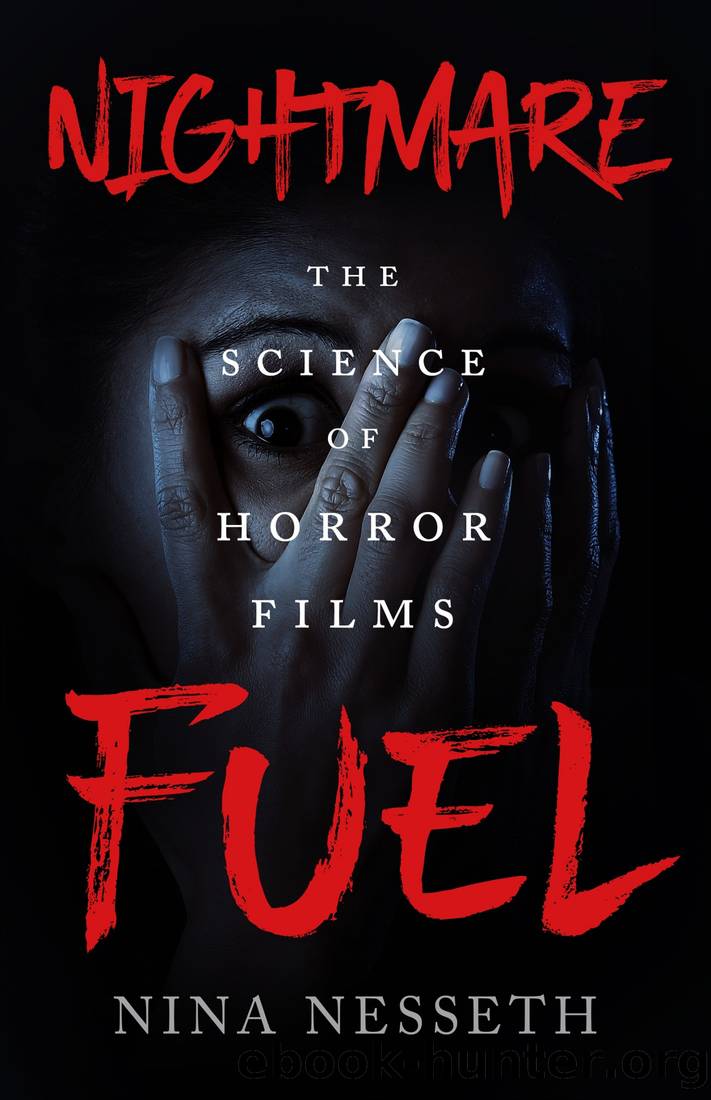Nightmare Fuel: The Science of Horror Films by Nina Nesseth

Author:Nina Nesseth [Nesseth, Nina]
Language: eng
Format: epub
Tags: Performing Arts, Film, Genres, Horror, Social Science, Popular Culture
ISBN: 9781250765222
Google: oJc9EAAAQBAJ
Publisher: Tom Doherty
Published: 2022-07-26T20:45:09+00:00
* * *
THE SCREAM
We canât talk about sounds that scare without talking about the scream. And Iâm not talking about Edvard Munchâs famous painting, although it does give a great visual: the subjectâs eyes are wide and staring and his mouth is stretched open in an expression that can only be recognized as fear. If this painting had audio, you know exactly what sound that figure would be making.
No matter what language you speak, the sound of an adult screaming is universally understood as a vocalization of fear or alarm. Babies scream too, to express alarm like adults do, but also to alert their parents to needs like hunger or discomfort that they donât yet have words to describe. Screams are not only loud and shrill; theyâre also immediately recognizable as a distress signal.
Screams in horror movies tend to come in two flavors: the sudden and perfectly timed jump scare scream (an art perfected in YouTube screamer videos) that aims to startle the viewer, and the reactionary scream that aims to amplify feelings of fear by demonstrating a characterâs horror.
Despite the universality of the scream, the science of screams still isnât well understood.
In 2015, neuroscientist David Poeppel and his team launched an investigation to decipher what exactly is happening when we hear a human scream and what makes its sound so special. They created a catalogue of human screams both by downloading a collection of screams from movies and by bringing real people into the lab and recording their screams. These screams were added to a bank of sounds that also included spoken sentences, artificial sounds (like alarms and instrument sounds), and tones.
These sounds were then ranked by participants on the order of how scary they were on a scale from 1 (neutral) to 5 (alarming). Unsurprisingly, human screams stood out from the rest of the sound bank. The screams that freaked participants out the most were ones that fell into a range between 30 to 150 Hz. The scariest screams also showed the highest measures in a sound quality known as roughness. In sounds with high roughness, the amplitude or loudness is modulated very, very fast (between 30 and 150 times per second). Roughness makes scream sounds more detectable; it also makes scream sounds sound very unpleasant. This modulation places screams in the category of nonlinear sounds, sounds that distort when they are too loud and rough for the instrument projecting themâlike a raw scream straining the limits of the human larynx.
Irregular, scratchy nonlinear sounds are often found in nature, usually in young animals whose cries need to attract their parentsâ attention. Similarly, humans respond more to baby cries that contain nonlinearities than ones that donât. Furthermore, studies focused on meerkats have shown that they donât easily habituate to nonlinear soundsâthey are meant to be alarming, abrasive, and hard to ignore. It makes senseâthese sounds indicate the presence of a potential predator. Survival requires us to not get used to the kind of sound that might point to something
Download
This site does not store any files on its server. We only index and link to content provided by other sites. Please contact the content providers to delete copyright contents if any and email us, we'll remove relevant links or contents immediately.
The Kite Runner by Khaled Hosseini(5057)
Gerald's Game by Stephen King(4545)
Dialogue by Robert McKee(4298)
The Perils of Being Moderately Famous by Soha Ali Khan(4147)
The 101 Dalmatians by Dodie Smith(3435)
Story: Substance, Structure, Style and the Principles of Screenwriting by Robert McKee(3380)
The Pixar Touch by David A. Price(3342)
Confessions of a Video Vixen by Karrine Steffans(3227)
How Music Works by David Byrne(3135)
Harry Potter 4 - Harry Potter and The Goblet of Fire by J.K.Rowling(2963)
Fantastic Beasts: The Crimes of Grindelwald by J. K. Rowling(2952)
Slugfest by Reed Tucker(2919)
The Mental Game of Writing: How to Overcome Obstacles, Stay Creative and Productive, and Free Your Mind for Success by James Scott Bell(2830)
4 - Harry Potter and the Goblet of Fire by J.K. Rowling(2634)
Screenplay: The Foundations of Screenwriting by Syd Field(2543)
The Complete H. P. Lovecraft Reader by H.P. Lovecraft(2489)
Scandals of Classic Hollywood: Sex, Deviance, and Drama from the Golden Age of American Cinema by Anne Helen Petersen(2449)
Wildflower by Drew Barrymore(2428)
Robin by Dave Itzkoff(2345)
